Recursive Growth: Cairns
Objective:
To design an architectural installation inspired by recursive growth in nature and how nature would take over a space within the Mies van der Rohe Pavilion.
Concept:
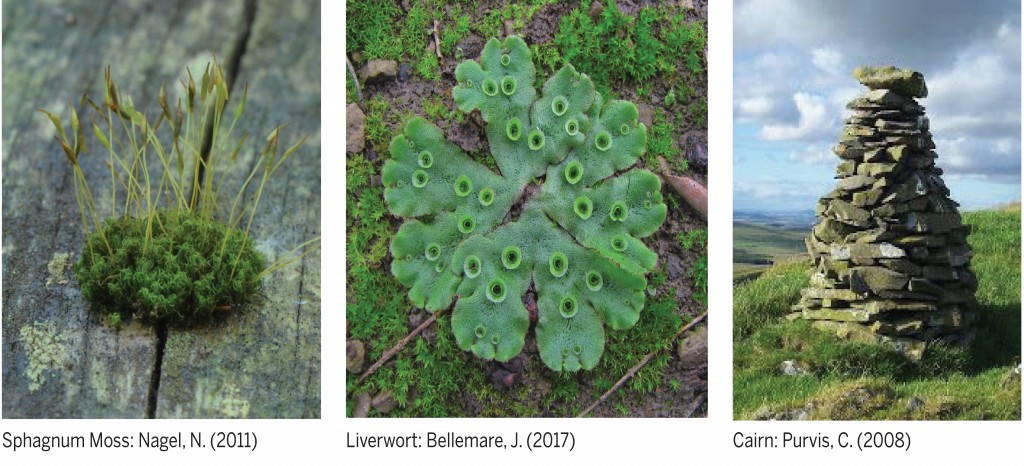 Non vascular plants such as mosses and liverworts are plants that can start from a single point and then grow outwards propagating an area. Either they grow outwards in a mass or by sending tentacles out to take over a space. Simultaneously, sometimes parts of the plants grow upwards. Thus, taking the idea of the simultaneous growth of up and out, the concept is to create seating areas within the pavilion for people to make the most of the various views. The towers will act similarly to Cairns found in the Scottish Highlands which act as a guide and marker to know when one is at the top of the mountain. In the pavilion, these towers can be moved around and vary in size depending on what view is highlighted and depending on the number of people.
Non vascular plants such as mosses and liverworts are plants that can start from a single point and then grow outwards propagating an area. Either they grow outwards in a mass or by sending tentacles out to take over a space. Simultaneously, sometimes parts of the plants grow upwards. Thus, taking the idea of the simultaneous growth of up and out, the concept is to create seating areas within the pavilion for people to make the most of the various views. The towers will act similarly to Cairns found in the Scottish Highlands which act as a guide and marker to know when one is at the top of the mountain. In the pavilion, these towers can be moved around and vary in size depending on what view is highlighted and depending on the number of people.
Pseudo Code:
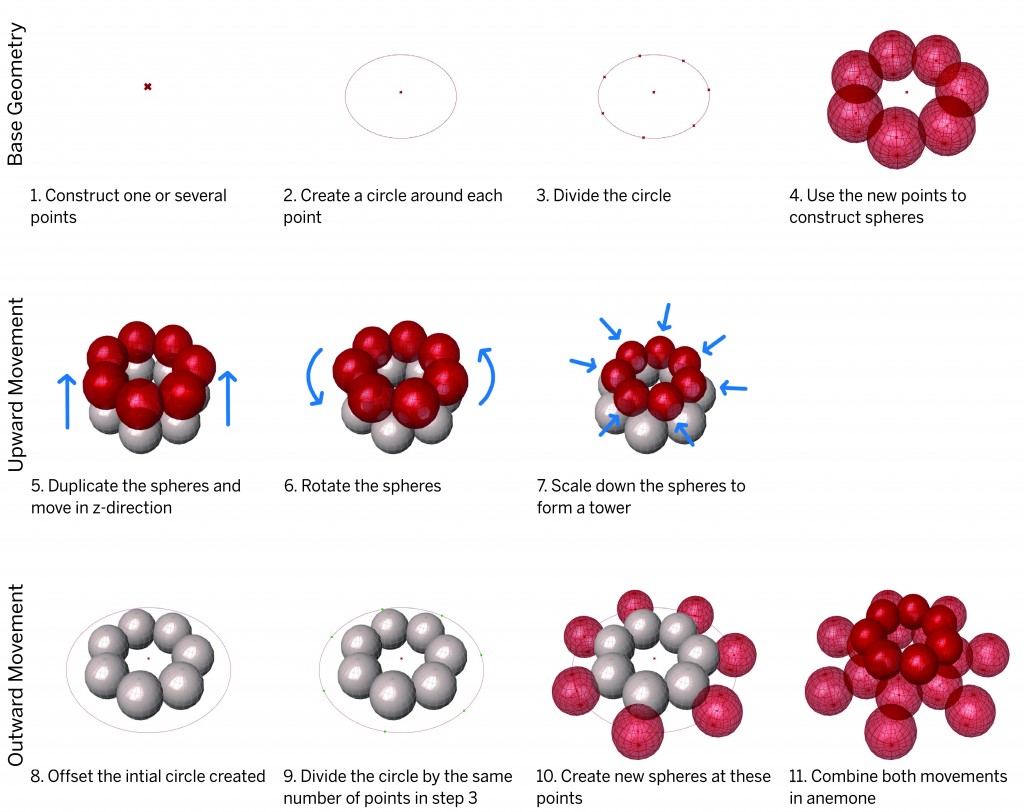
Base Geometry:
The base geometry is inspired by the Romanesco Broccoli. This specie of broccoli forms an overall geometry of a cone, but is made of spheres. As the spheres get closer to the point of the cone, they shrink.
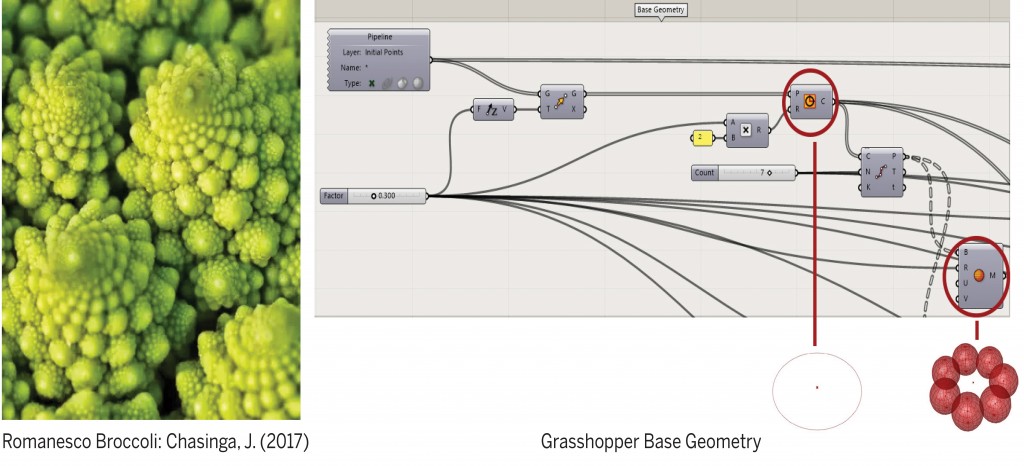
To achieve the result intended, the base geometry is made out of spheres and a circle which is grown out of a point. The number of starting points can vary by adding and removing points in the Rhino Model.
Recursive Strategy:
The recursive strategy is used to achieve the upward and outward growth. As the towers grow in the z direction, the size of the base geometry moves upwards (translation), shrinks (transformation), and rotates. As the tower grows outwards, long tentacles begin to grow outwards at all levels of the z-axis. Each iteration adds a new layer to both the outward and upward growth.
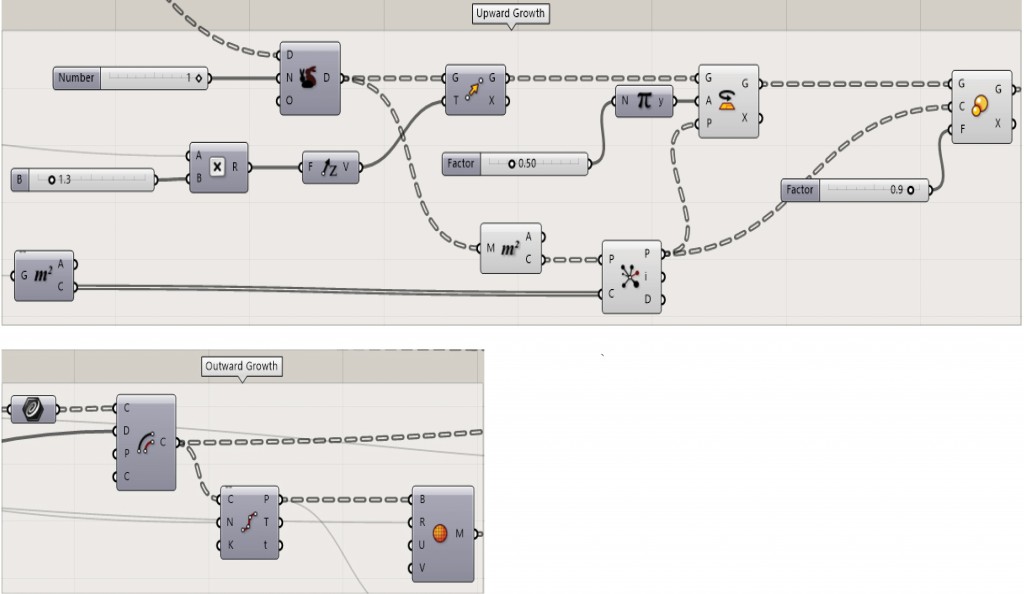
Parameterization of the Model:
The factors that can be changed include:
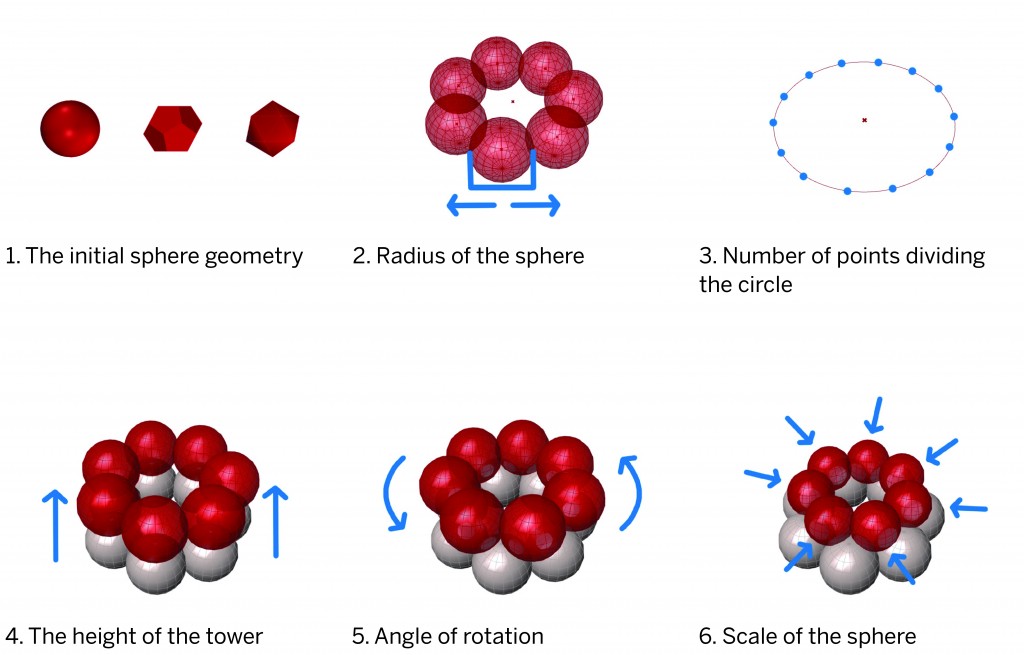
Also, by adding points into the Rhino model new cairns will appear. These factors could depend on the number of visitors. The greater the number of visitors the larger the cairns will be. At a small scale the cairns could also be used to guide people through the pavilion picking out the key viewpoints.
The Catalogue:
Iterations:
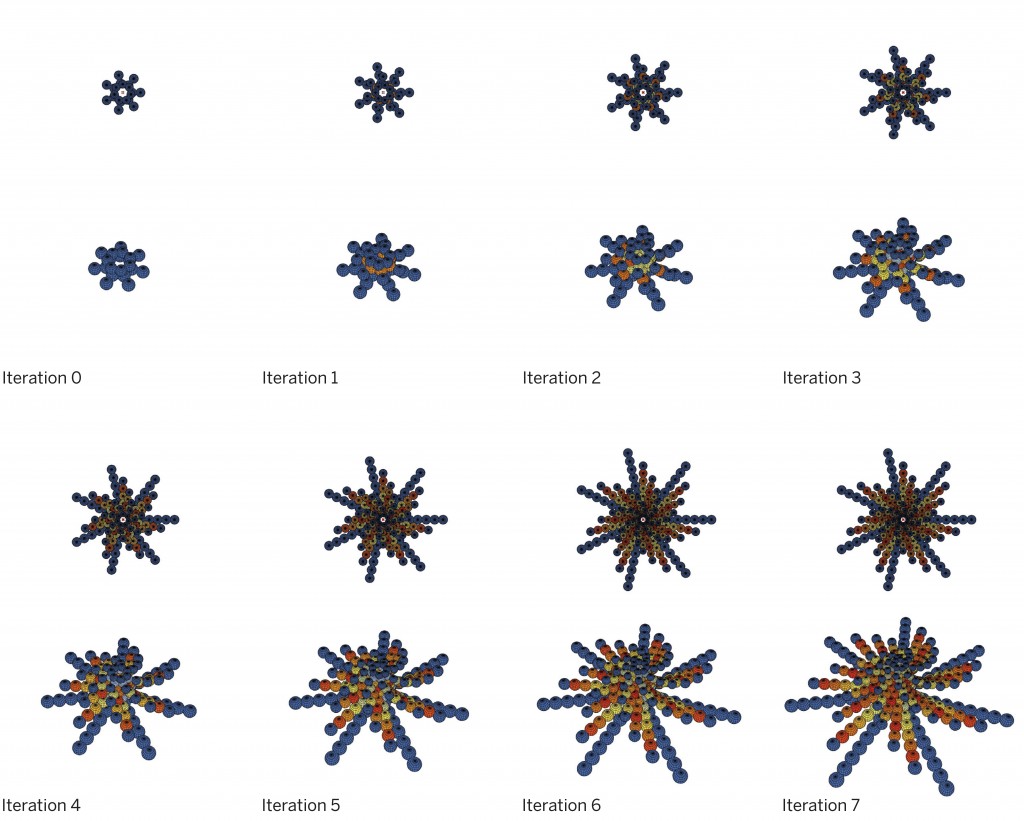
Variations with Iteration 4:
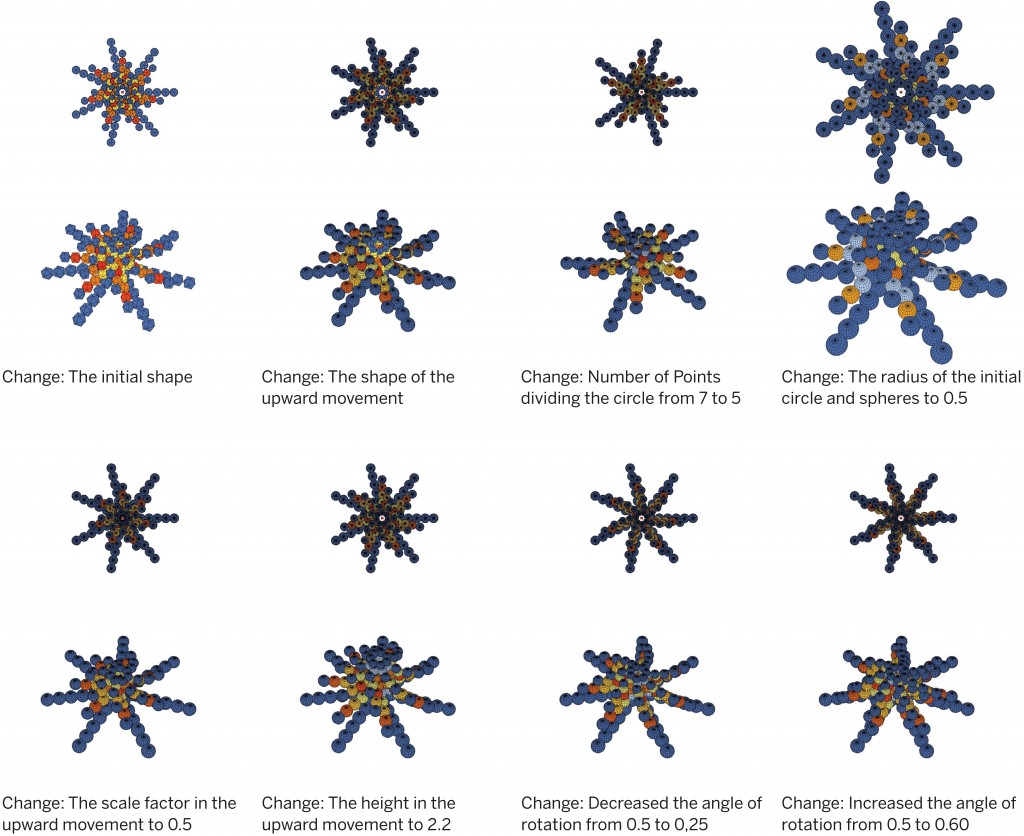
Final Render and Animation:
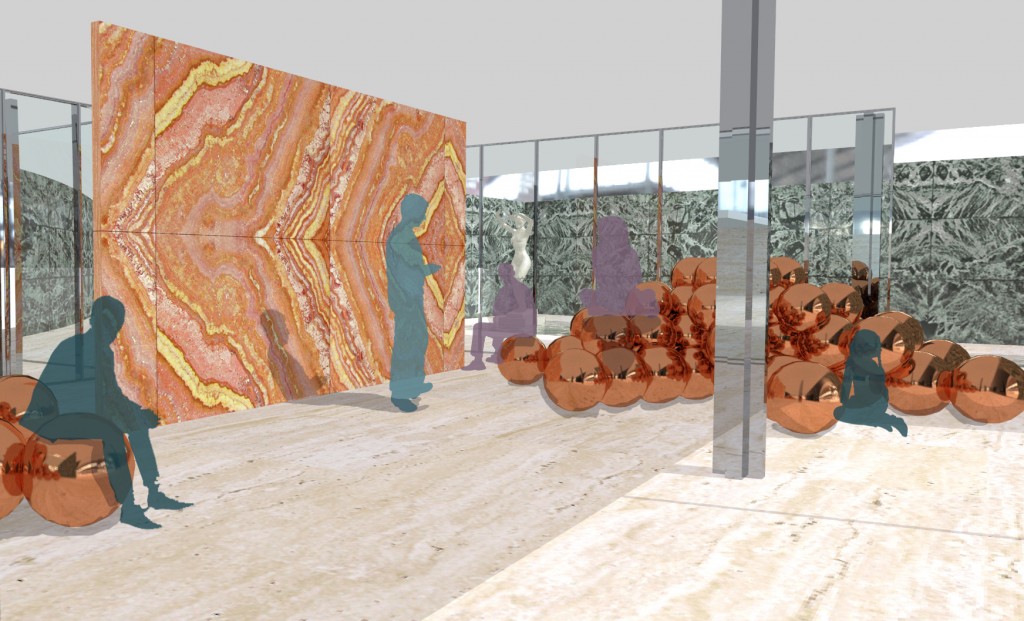
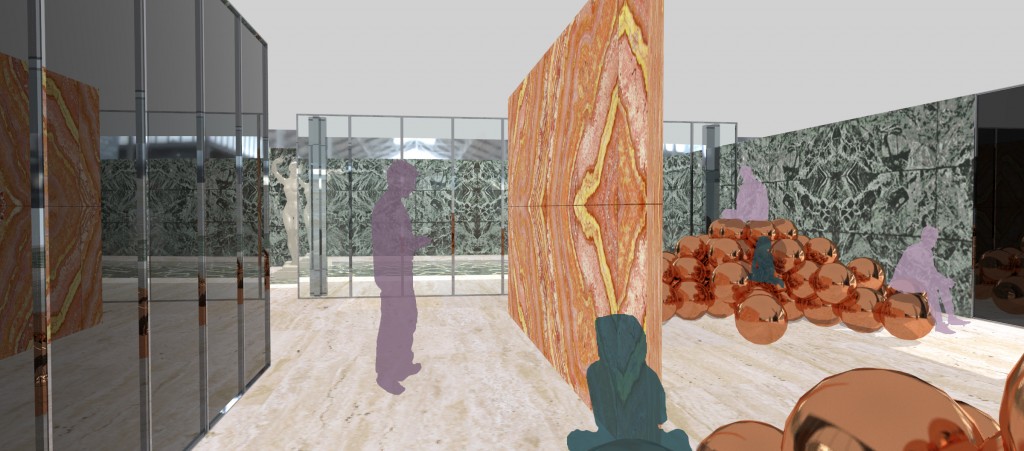
Recursive Growth is a project of IaaC, Institute for Advanced Architecture of Catalonia developed at Master in Advanced Architecture, in 2018/2019 by:
Students: Fiona Clara Louise Demeur
Faculty: Rodrigo Aguirre
Student Assistant: Daniil Koshelyuk and Nikoleta Mougkasi
References:
Bellemare, J. (2017). Liverwort. [image]Available at:
https://twitter.com/hashtag/liverwort
[Accessed 16 Mar. 2019].Chasinga, J. (2017). Recursion Made Simple. [online] Medium. Available at:
https://medium.com/code-zen/re
cursion-demystified-24867f045c62 [Accessed 16 Mar. 2019].
Nagel, N. (2011). Sphagnum – moss – Moos 01.jpg. [image] Available at:
https://commons.wikimedia.org/wiki/
File:Sphagnum_-_moss_-_Moos_01.jpg [Accessed 16 Mar. 2019].
Purvis, C. (2008). A Scottish Cairn. [image] Available at:
http://rockpiles.blogspot.com/2008/02/scot
tish-cairn.html [Accessed 16 Mar. 2019].